Awards
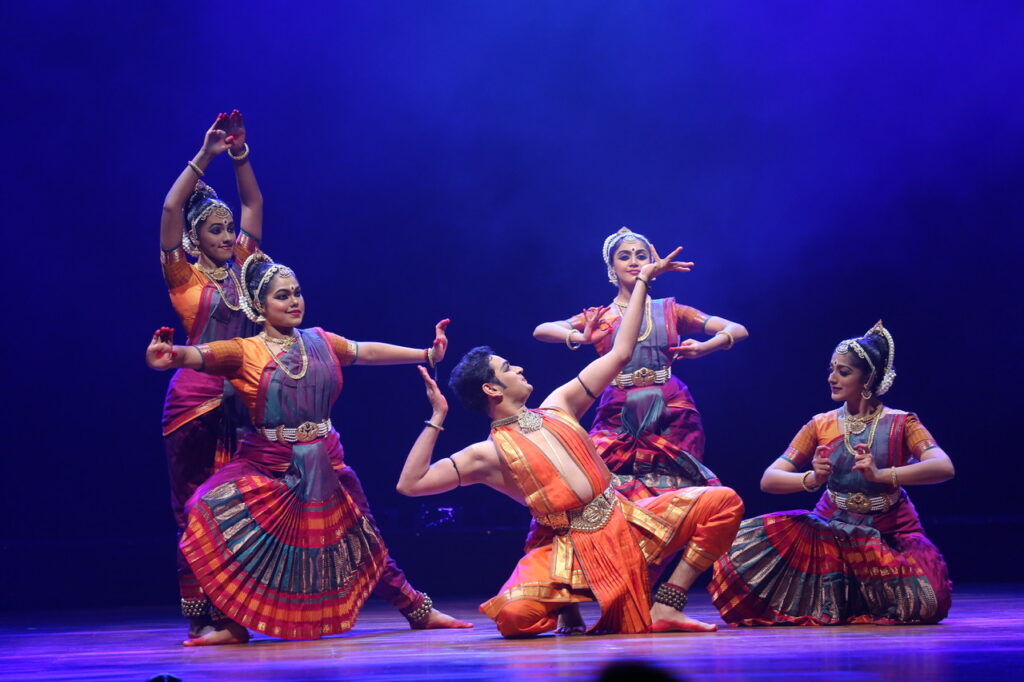
Apsaras Arts receives The Steward of Singapore’s Intangibile Cultural Heritage Award 2020 The month of June began on a momentous note with Apsaras Arts being selected as one of the 6 organisations to receive The Stewards of Singapore’s Intangible Cultural Heritage Award. This award aims to recognise practitioners (individual and groups) of intangible cultural heritage (ICH) who are dedicated to the promotion and transmission of their practices and have made outstanding contributions in their field. This award conferred by the National Heritage Board (NHB) is one of the key recommendations for the safeguarding of ICH, as part of Our SG Heritage Plan, the masterplan for the heritage and museum sector for 2018 to 2022. “We are deeply honoured & humbled, for Apsaras Arts to win this award. This award recognises our Founders vision to create a dance company to celebrate our local dance traditions, and to nurture young aspiring talents to be showcased internationally. This recognition encourages our current generation of art-makers who are striving with our mission. For Indian classical dance to be considered an intangible cultural heritage of Singapore, is a sacred responsibility, Apsaras Arts has immense pride in being its custodian here in Singapore, to hand it down to the next generations of Singaporeans as their cultural heritage and as a living tradition” – Aravinth Kumarasamy, Artistic Director, Apsaras Arts This recognition was covered in a two-page feature in the national paper, Straits Times and will be conferred in person at a later date. In gratitude of the community and to commemorate the 43 years of it’s service at Singapore, a video was released on 9 June 2020 showcasing 43 faces and voices associated with the Apsaras Arts company sharing adjectives that reflect their relationship and what this company means to them. SICH Award 2020 Link: https://youtu.be/idmSmkLxdQE
Odissi Dance Exchange: ODE by ETHOS

Over the months of May to July, Soumee De, Odissi faculty of Apsaras Arts, curated a series of webcast session for dance students, performers and teachers by inviting scholars, researchers and experts to share their practice, knowledge and experiences over an interactive dialogue. Over 10 episodes on Friday evenings, this series featured eminent speakers on a varied range of topics that engaged more than 160 attendees globally on a weekly basis. Read more.. Over the months of May to July, the ETHOS team curated a series of webcast session for Odissi students, performers and teachers by inviting scholars, researchers and experts to share their practice, knowledge and experiences over an interactive dialogue. Over 10 episodes on Friday evenings, Soumee De, curated and moderated this series with eminent speakers on a varied range of topics that engaged more than 160 attendees globally on a weekly basis. Originated at the onset of the pandemic related circuit breaker period at Singapore, these online webcast series aimed at building breadth and depth of knowledge from a variety of scholars. Please see below the episodes and a quick summary. • Episode 1: Sri Rahul Acharya on exploring the origin and history of Odissi dances • Episode 2: Dr Rekha Tandon on exploring dance as yoga and practices of embodying • Episode 3: Set Sonali Mishra on her journey as an odissi-nomad • Episode 4: Smt Swapnokalpa Dasgupta on demystifying Arts Management • Episode 5: Smt Indu Vijay on her practice of Yoga in dance • Episode 6: Dr Kaustavi Sarkar on Dance Education standards revisited • Episode 7: Dr Rohini Dandavate on Intercultural perspectives of traditional dance • Episode 8: Sri Sooraj Subramanian on his career journey with multiple dance forms and creating new works • Episode 9: Dr Ileana Citaristi on Jayadeva’s Geet Govind and Odissi • Episode 10: Dr Elena Catalano on Anthropology and Odissi Soumee shared that this series was curated keeping in mind the three E approach to dance training: Education, Exposure and Experience. While most of the weekly dance classes in the studios focus on embodying the experience of dance training, the lock down period inspired her to build on the Education & Exposure legs of dance training, outside of the classrooms. There were several knowledge sharing sessions that aimed at deepening the understanding of Odissi dance traditions, history, embodiment techniques, literary texts as educative sessions. There were other practical exposure related sessions to different aspects of dance training, learning and performing. From arts management to intercultural perspectives, from creating your own amalgam of organic works to applying yoga practice to overcome injuries and mindset issues- the ODE webcast series objectives were to provide holistic learning experience to Odissi learners, teachers and performers. Ethos would like to thank the speakers for their efforts in teaching generously despite the pandemic challenges. Gratitude to the ODE attendees who tuned in every Friday evening to actively participate in this interaction from around the globe and also donated generously so we could invest this back to the speakers for their contribution in creating learning value for all of us. Short trailers of the episodes are available on the You tube channel link: If you are keen to access the recorded webcasts, you may contact us at odissi.ethos@gmail.com.
Spotlight Series Sessions in June-July 2020
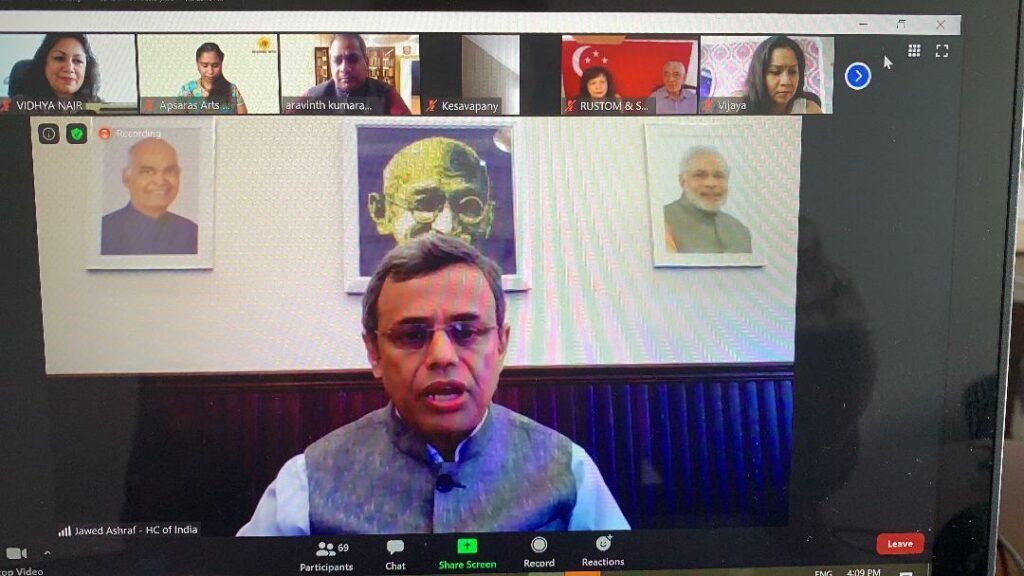
On 21st June, H.E Javed Ashraf, High Commissioner of India at Singapore, spoke on “Transcending Boundaries – The Power of India’s Cultural Heritage” at the virtual Spotlight Series. Speaking off the cuff from the High Commission of India, on a Sunday which was coincidentally International Day of Yoga, he spoke with eloquence and depth on the enduring power and potential of the ancient transcending Indic traditions and culture through language, ideology, philosophy, religion, customs and traditions to the rest of Asia and in particular, the specific influences to South East Asia, including Singapore. He shared via a multi-visual slide show with a collage of photographs taken by him personal to depict the multi-cultural vibrancy of Singapore that he had experienced first-hand and subsequently changed his impression of Singapore positively. In the communities he had engaged, the religious activities he had participated in, he found cultural elements embedded in them. He felt that Indian culture and heritage can continue to build dialogue and bridges for long-lasting friendship and camaraderie between India and Singapore. This session was attended by over 80 participants including those from Europe, especially French-Indian arts organisers who are anticipating his impending arrival and are looking forward to support from the Government of India for Indian cultural exchange in France. It was a pleasure hearing his views, many of our students and participants were encouraged to hear his positive words, especially during this difficult global pandemic.
On the Virtual Stage
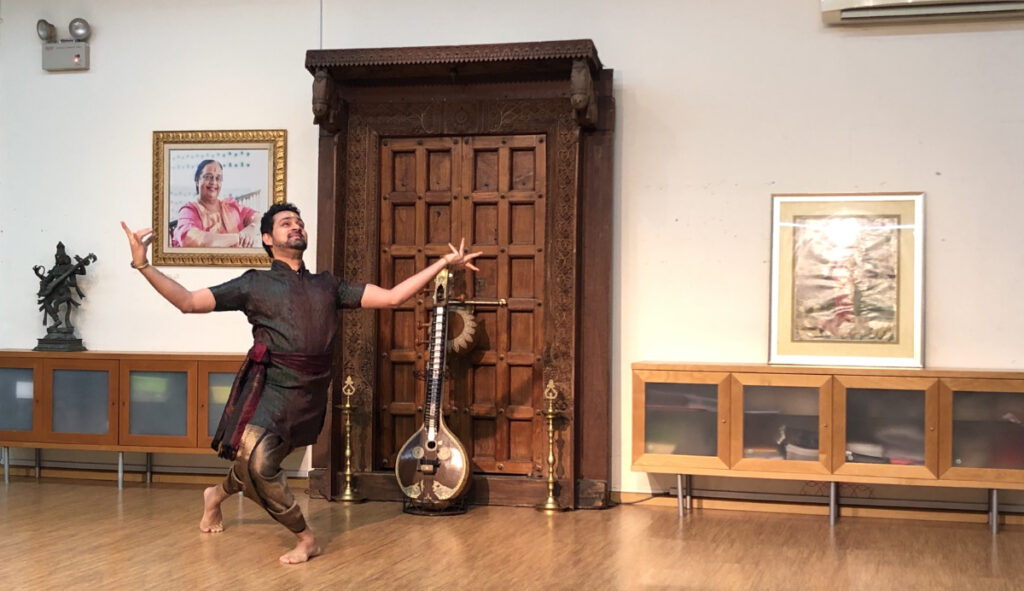
June-July round-up of the virtual stage: From preparation for the re-opening of the studios in compliance with safe distancing measures to the continuation of digital performances online, from in depth interviews to the launch of digital live shows; from solo performances to group choreographies, here is a digest of the activities by Apasrasa Arts teams across the world! On 27th June senior Bharatanatyam dancer and mental health doctor, Deva Priya Appan was interviewed by Simon Lim in The Sensitive Man Podcast, Episode 4 on Classical Performing Arts. Deva Priya Appan spoke at length about her dance journey. She shared her international dance tours to Australia and South African and her recent concept performance, Duality with fellow dance, Seema Hari Kumar in February 2020, as part of the memorial anniversary of Apsaras Arts founder, Mrs Neila Satyalingam. She spoke about the concept ideas showcased which included conflict and harmony in their repertoire and discussed the way Bharatanatyam costumes are created and the accentuation of the eyes in make-up and how accessories enhance movement. Through this podcast, she competently explained the essence of Bharatanatyam through rhythm and expressions. She also shared about the importance of mental health and how happiness and wellness can be achieved. Deva Priya also emphasised the pressing need to promote culture and heritage in society and how our identity can be shaped through the practice of dance. On 5th July, on the occasion of Guru Purnima, Apsara Arts released a dance video of Ādi Shankarāchārya’s Guru Ashtakam performed by our company dancers Seema Hari Kumar, Maanasa Sri Ganesh, Periyachi Roshini, Nagalakshmi Palaniappan and Janani Arun Kumar and choreographed by Mohanapriyan Thavarajah. A meaningful project as we reflect on the universal idea of the preceptor of wisdom and knowledge, the Guru. Watch the performance here: On 11th July, Soumee De performed at the Nritya Mohana Festival – an international online concert curated by Kathak Gurukul of Kolkata, Sahana Dance Institute, this is a month-long festival in July to tide over the lockdown restrictions with positivity generated by Indian classical dancers around the globe. Soumee started her performance with an invocation to Goddess Parvathy, Srimata Srimaharagni Srimat Simhasaneswari. Soumee has choreographed this Mangalacharan to the music composed by the talented Singaporean artiste, Chitra Poornima and this piece has been set to Raagam Revathi. Soumee’s next presentation was a pure dance item called Pallavi, which means “to elaborate.” In a tapestry of melody, rhythm and footwork – this Pallavi was set to Raag Meghand Jhampa Taal, composed by Pradeep Kumar Das and choreographed by Guru Ratikant Mohapatra. Soumee concluded the recital with an abhinaya item on an Oriya poem written by poet Benudhara. “She Shyama Chhabi Chhataka” is an old village poem voicing a young Gopi and how she can resist the sweet torment of Lord Krishna’s charming presence. Based on Raag Madhura Gurjari and Aadi Taal, music has been composed by Guru Gopal Chandra Panda and choreography by Guru Ratikant Mohapatra. On 12th July, Mohanapriyan Thavarajah performed live at the “Alangkara” online festival of Indian Classical Dances presented by Shruti, Adelaide. Mohanapriyan presented a thematic Bharatanatyam repertoire entitled “Thandav- the masculine dance of Lord Shiva.” He began with an invocatory piece on Lord Shiva’s imagery through Ravana’s Shiva Thandava Shotram. The verses describe his matted hair as the forest, with flowing wet locks that dampen his neck. Therein hangs the divine snake like a garland and his drum playing incessantly. This continuous beat brings Shiva into a trance, launching into a vigorous Tandava dance, showering his blessings of prosperity on the universe. His next piece was on the composition of Adi Shankaracharya’s Kalabairavashtakam which describes the attributes of Bharaiva – the fierce form of Shiva. This choreography brought out different episodes such as Bhairava’s harsh penance as he wanders the earth with Brahma’s skull as his begging bowl. This KalaBhairavashtakam is recited by priests in the famed Kalabhairava Temple in Benares before they bless devotees with a tap of the Lord’s staff. The concluding piece was an unusual interpretation invoking the spirit of ultimate bliss and the boundless joy found in the universe for every sincere seeker. This piece, composed by Dr Rajkumar Bharathi, combines two words in Sanskrit – “Anantam” (Boundless) and “Aanadnam” (Bliss). Here, the choreography represents the pure state of boundless bliss within every being. Mohanapriyan said “This festival organised by Mr Srirama and his team was a wonderful opportunity and was organised with a professional touch – from engaging the artistes ahead of the performance, organising a tech-run and ensuring a smooth festival. Presenting at such digital festivals gives hope to artistes like myself that we will return soon to the theatres.” The festival also featured performances by 2 Apsaras Arts alumni, Sangeetha Venkitt Karthik and Somi Lindsay, from Apsaras Arts at Adelaide.
Travel Diary
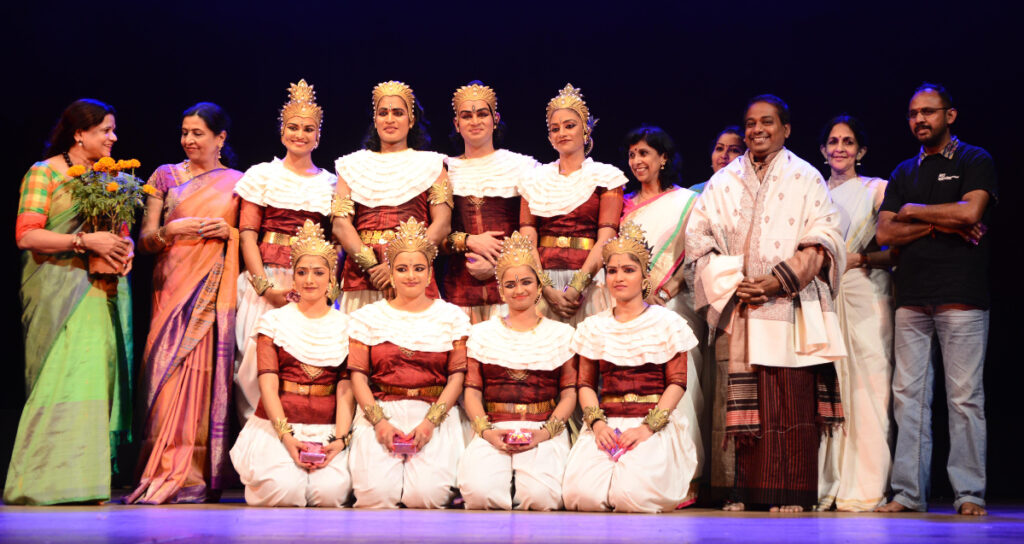
A trip down the memory lane with Anjasa International Tours Dance often has the ability to communicate, move, evoke, and entertain, but seldom does it have the power to take the rasika on a trip around the world while in the comforts of cushioned theatre seats. Anjasa, does just this. Though my relationship with this production started in 2016, it’s conception and production goes further beyond. Interestingly, akin to Anjasa’s ability to transport the audience from one monument to another, the production itself has seen a fair share of the world. Although the production premiered in 2015 in Singapore, my maiden rendezvous with Anjasa began in 2016 when it first hit the international arena at the Bangalore International Arts Festival. Later that year, Anjasa made its way to the UK, a space where people were electrified by the vibrancy of Buddhism. Despite the early winter chill, the incredible reception from the audience was beyond warming. It’s one of those experiences that makes one realise how powerful art can be, you know? Having the capacity to send the audience at the Capstone theatre to the Lumbini Gardens in the 6th century feels incredulous. The production eventually wended its way to Kuala Lumpur, Colombo, Kandy, and once again India, at the prestigious Natya Kala Conference in 2019. Reminiscing about past shows is such a delightful experience since each and every performance came with its unique share of memories, stories, and scope for laughter. They were like intangible souvenirs I took away from every tour. From galloping through a local train in India while wearing a horse mask during the first Anjasa tour to a mid-rehearsal chaat party during the last, I have a boundless list of memories. The Sri Lanka tour, in particular, was special. In Colombo, Anjasa was staged at the famous Nelum Pokuna Mahindra Rajapaksa Theatre. During the first bump-in, I remember walking on and on within the theatre towards the stage and wondering how much more I would have to walk before I got there. Turns out, I was on stage. I was an ant on a 690 meter square stage; we all were. I remember how “warming up” meant sticking our limbs out at the heater in London and water was replaced with Costa’s Lindt hot chocolate in Liverpool. I remember the sleepless rehearsals, the chai overdose, the sightseeing and our impromptu photoshoots, the wardrobe crises, the midnight dinners, the backstage banter, the pre-show jitters, and the post-show high. I remember every memory that seasoned the tours to become extraordinary. While the premise of the show, concept, choreography, and costumes have remained a constant through each of these performances, as a dancer, every performance felt as fresh as the first. For a change, I was not Shiva, Krishna, or Sita, and no one was. We were Apsaras, monks, swans, creepers, and pillars – each with its own idiosyncratic identity. As a performer, I was constantly challenged to bend the language of Bharatnatyam whilst never breaking it. The novelty of Anjasa transcended beyond its concept; the Southeast Asian inspired music, the delightfully sui generis costumes, and the augmented style of Bharatnatyam amalgamated to make chisel the production to the refreshing one it is. Anjasa unraveled more than just Buddhist monuments.
“On Re-discovering the deep rootedness of Dance” : an Interview with Mrs V (Vijaya Nadesan)
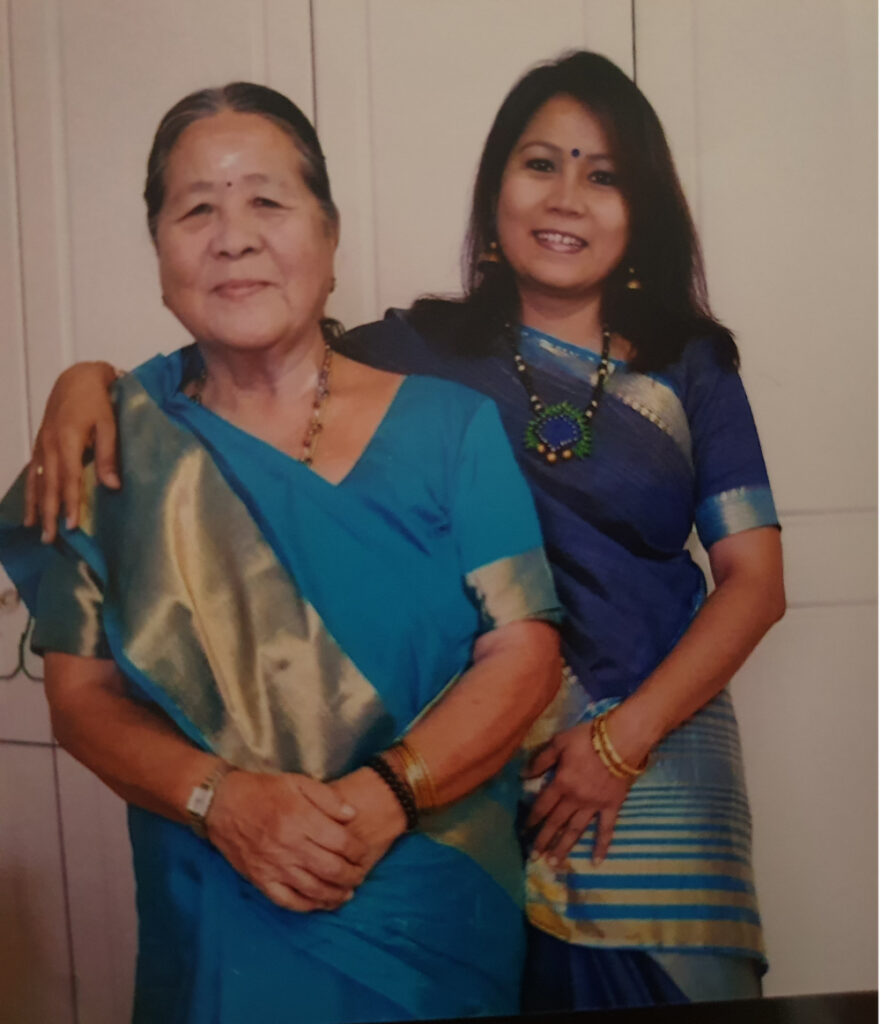
“I want my dancers to be informed and creative thinkers. They must explore, be uncluttered in their mind and apply the techniques of dance with skill and bring their audiences to a state of profound consciousness. This is the deep rootedness of Bharatanatyam and it has been my privilege to gain this knowledge and association,” says, Mrs Vijaya Nadeson, the Principal of Apsaras Arts Academy. Read on to learn more about her journey of this re-discovery. Growing up on Hindoo Road in the 1970s was idyllic. Our family of seven lived alongside Chinese and Malay families in quarters as my father, a senior foreman who oversaw labourers working in the area. A fire broke out in 1978 causing us to lose much of our valuables and we moved to Jalan Besar temporarily and finally settled in Towner Road after much hardship. During this period, my mother had enrolled both me and my sister for dance classes at the nearby Tanglin Club. It was not known to us that these classes were run by Apsaras Arts. But after the fire, our classes stopped. A few years later when I turned 9, my mother has started working and had taken interest in Tamil theatre [she went on to be a prolific actor on stage and television] and this time at Kallang Community Centre, again there were dance classes. My teachers were Muthulakshmi and Vijayarani. I performed many group items with other students. At 17, the teacher changed. Now, it was Neila Sathyalingam. The teaching style was substantially different and she got me to join the rest of her students at Cairnhill Community Centre and thereafter to her classes at People’s Association. I became one of the group dancers of Apsaras Arts, representing Singapore at many local and international events. The annual Chingay Festival was a highlight with larger than life, fantasy themes which gave Apsaras Arts and Mami recognition and acclaim. We travelled to many cities – Papua New Guinea, China, Japan, Hong Kong, Macau, Thailand. From Pushpanjali to Thillana to combined group dances with fellow Chinese and Malay dancers, we did it all. Our dance performances were launch-pads for Singapore’s branding as a multi-ethic cultured society. Towards the end of the 1980s, Mami also created noteworthy Indian dance-musicals involving local talents such as Meenakshi Kalyanam”, “Navaratri Nayagi” and “Ganesha.” Creating these works required extensive research, designing costumes and jewellery, finding sponsors to fund overseas tours to India and Sri Lanka, creating brochures and program booklets. Mami roped me for many of these assignments alongside dance. This work was also part of being a performer. She would say, “Girls, I want you to know and learn everything.” My sustained interest in Bharatanatyam became rooted with Neila Mami. Everywhere we went, Mami was with us, taking care of our needs, ensuring we were safely dropped off after a late-night rehearsal and a constant during all our overseas tours. She never left our side. My parents trusted her completely and were supportive of all the initiatives I embarked on with Mami. During this time, the Sathyalingams launched RasiSilks, a saree store with a difference. A venture ahead of its time. Working with an American designer, Sandy Edsall, incorporating Indian weaves such as Kanjeevaram, Mulberry, Tushar with distinctive motifs of peacock or lotus, a western clothing line also morphed alongside an exquisite saree collection. Mami roped me in to model these designs in print magazines, catalogue collections and also to be the front-runner for catwalk shows she organised to showcase the innovative range at RasiSilks. Many of the shows received great reviews cementing Mami’s design ideologies and styling skills which married traditional aesthetics with modern trends. Although she had received the Cultural Medelion in 1989, these development years resulted in her using her prize money to create her magnum opus, “Kannagi.”in 1998 which combined dance, music and spoken drama, a first in the local arts scene. Marriage and children came for me by then . Both Mami and Mama (Sathyalingam) were personally involved. As the family I joined also had roots from Sri Lanka, they took responsibility to guide me on their customs, traditions and meeting the expectations of my new in-laws and husband. It was not difficult for my new family to in turn support my continued dance career and they backed everything I did with the Sathyalingams. By the 2000s, Mami had gained greater confidence to navigate the changing society and tastes. Her choreography style began to adapt to incorporate elements of fusion and she would deftly use lyrically and melodically rich film songs to create items that would appeal to a mass audience. It distinguished us, Apsaras Arts as a serious dance company with semi-professional dancers that became notable for aesthetically pleasing works that was traditional, with a modern sensibility. We did many programs that combined instrumental pieces from the Cineworld with folk dances of Nagaland, Tamilnadu and traditional dances with fantasy costumes that brought to life, creatures and animals like swans, snakes or metaphorical emotions within the dance idiom like Navarasas, focusing on the negative ones like jealousy, anger and greed, easily relatable to our audiences. All of these formed the genesis of the thematic concept work that Apsaras Arts is known for and continues to do today. With this extensive exposure and mentoring from Mami, I became poised to begin teaching dance myself. She started to give me more assignments and over time, I took over the dance training she started at schools, through AEP (Assisted Education Program) and CCA (Co-curricular Activities). This challenging work, often involving non-Indian students with little or no background in Indian culture or dance which pushed me to choreograph and create thematic ideas through research and I was often guided by Mami’s advice, “Simplify the costumes, amplify the techniques.” Over the years, the schools I have worked with including Cedar Girls and St Anthony Cannossian Secondary Schools have won Gold with Honours for Indian Dance at the annual Singapore Youth Festival Inter-school competitions. Some
From the Book Shelf July 2020
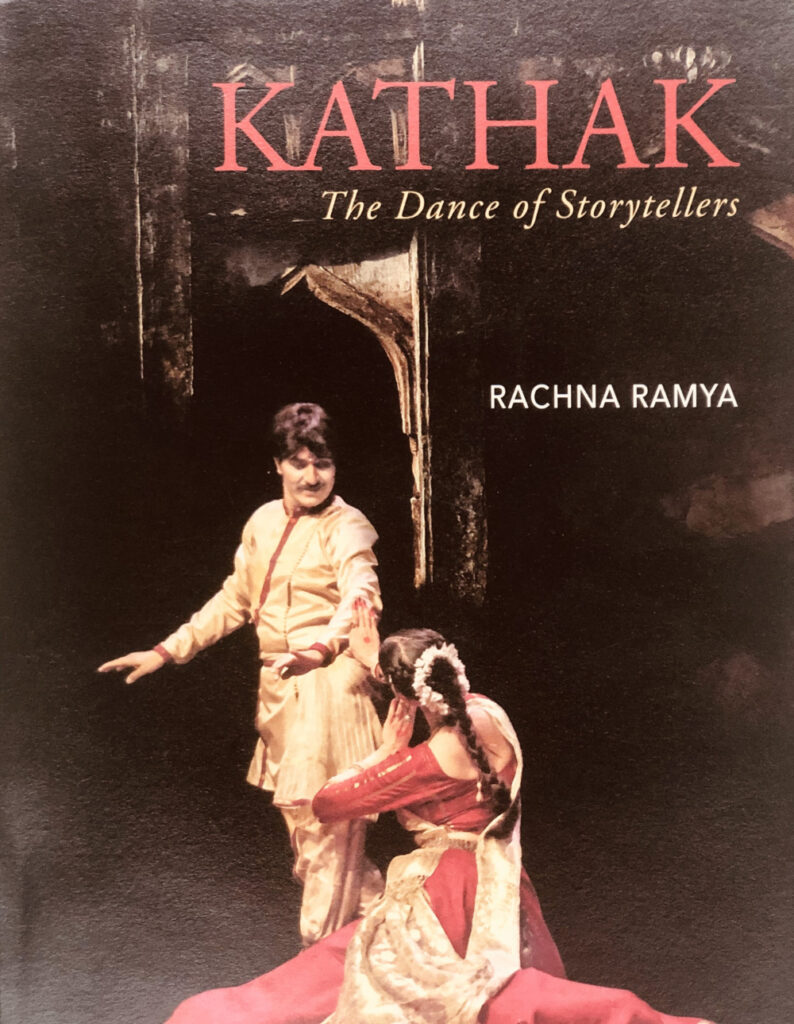
KATHAK The Dance of Storytellers By Rachna Ramya Kathak – The Dance of the Story Tellers explores the philosophical and practice aspects of Kathak dance – its origin, development and techniques. Investigating this compelling dance style from cultural and historical perspectives, the book delves into the essential principles of Kathak, its schools and major artistes, the format of Kathak performances, repertoire, Kathak music, predominant trends in training, and the system of practice through the lens of theory and application. A rare resource, the book is a comprehensive read for students, dancers, teachers, and dance lovers. About the Author Performer, choreographer, author and educator Rachna Ramya has studied Kathak under Dr Maya Rao and the Jaipur style of Kathak under Pt Rajendra Gangani, both recipients of Sangeet Natak Academy Award, India. She is also trained at the Natya Institute of Kathak and Choreography in New Delhi, India. Currently, she is teaching a course in dance at Trinity Collage in Hartford, Connecticut, USA. She is als the artistic director of Sumbhaav School of Kathak Dance.
Añjasa – Unravel the Wonders of Buddhist Monuments
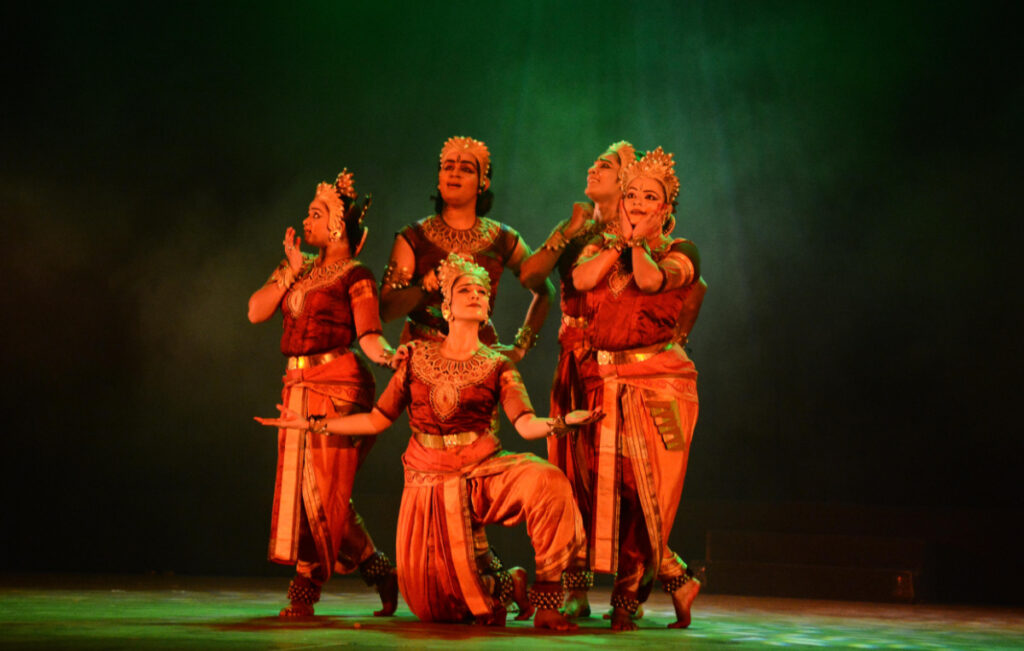
By Aravinth KumarasamyAnjasa means “path” in Pali, and this production has led me and the artistes along a memorable journey, understanding, admiring and appreciating the spirit of Asians in their pursuit in search for peace and enlightenment. The “path” to the making of Añjasa has been very fulfilling,” says, Aravinth Kumarasamy, Artistic Director. This production has taken Apsaras Arts Dance company along a journey to various venues and festival in Asia and Europe, and this July we are delighted to bring it live on the digital SISTIC live platform. Añjasa is a continuation of the vision of the earlier dance production Nirmanika – The Beauty of Architecture ( which premiered in 2010) which has been on many international tours. Following the success of Nirmanika, Añjasa, has been conceived as a sequel. Exploring and researching the beauty of Asian Buddhist monuments and Buddhist architecture has been an enriching experience, reliving my childhood days in Sri Lanka. Bharatanatyam as a dance form relies heavily on the iconography and the narratives of Hinduism. Conceiving and choreographing Añjasa, a Buddhist theme in the language of Bharatanatyam has been an interesting experience. The concept Anjasa consists of 10 beautiful elements Anjasa means “path” in Pali, and this production has led me and the artistes along a memorable journey, understanding, admiring and appreciating the spirit of Asians in their pursuit in search for peace and enlightenment. The “path” to the making of Añjasa has been very fulfilling. Anjasa has taken Apsaras Arts Dance company along a journey to various venues and festival in Asia and Europe, and this time has brought the production to digital presentation We are delighted to announce the launch of the upcoming digital live showcase of this acclaimed 2015 production where the audience will journey through Bharatanatyam expressions and movements that depict monuments including Mahadevi Temple in Nepal, Bodhgaya Mahabodhi Temple and Sanchi Stupa in India, Vattadage in Sri Lanka, Shwedagon Pagoda in Myanmar, Bayon in Cambodia, Borobudur in Indonesia and Wat Pho in Thailand.This thematic dance presentation will also cover the influence and impact of Buddhist emperors, Asoka and Jayavarman VII who were iconic in the spread of Buddhism throughout Asia.I am reminded of one of Buddha’s sayings – “It is better to travel well, than to arrive”. I sincerely hope that you will enjoy this journey across Asia admiring the wonders of Buddhist monuments through dance and music in Añjasa.
From the Travel Diary
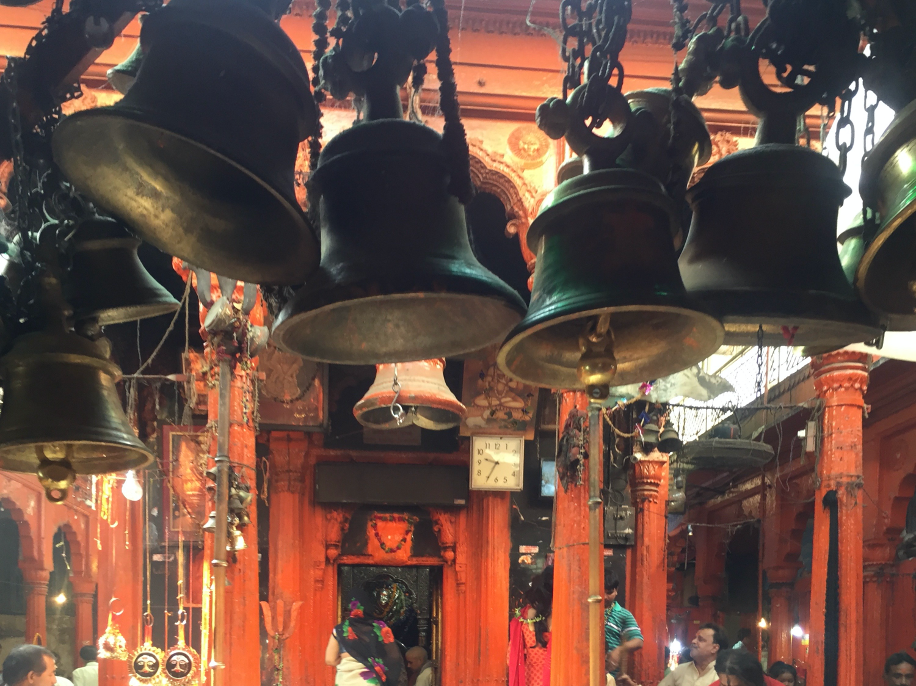
By Meera Balasubramanian Having been associated with Apsaras has given me a number of opportunities to travel around the world and perform in different and prestigious venues. One such tour was the mega India tour where the team Apsaras Arts travelled around India for one whole month and performing in various cities. This was a very special and memorable trip for all of us as we were under one roof for the whole month, where We made a lot of wonderful memories through the entire tour and a month filled with fun, laughter, food and of-course dance. At the end of monsoon season, September is one of the most colourful months in India, with a lot of festivals lined up from Dussera to Diwali. The atmosphere during this period is electric filled with joy. Amidst the high energy atmosphere, we were to perform four thematic dance productions from Apsaras, namely Anjhaasa, Alapadma, Adam Arul Jothi and Ramayana. “Welcome to Bengaluru, ladies and gentlemen” The pilot announced over the PA , I was a bit excited and nervous thinking about my kids back home and while looking forward for the long trip ahead. I set outside the aircraft, the cold September breeze of Bangalore hit me. It was a pleasant weather. The journey from the airport to the guest house bought back a lot of memories from the time I spent in this city of (no-more) gardens. Thanks to our sponsor Mrs Rhama Sankaran for hosting us and making our stay comfortable. Me and my friends were tired from the journey and jet lagged, but we had to get ready immediately for our first performance of our tour. Back from the days I spent in Bangalore, It was always my dream to perform in the prestigious Chowdaiah hall. It turned out to be a wonderful and energetic performance. It was a successful show and encouraging reviews in the local news papers. You get a high and elated feeling after the successful show, clubbed with the excitement of spending time with the gang of girls under a single roof is recipe for fun, happiness and endless banter. It was going to be stressful with all the travel and performances lined up, its essential to manage stress and stay healthy. Our Artistic Director, Mr Arvinth Kumaraswamy had organised yoga sessions to keep balance between mind and body. The early morning yoga sessions helped a lot , to relieve tiredness, infact some of us would be snoring while reaching the end of the session with savasana. Most of the day would be spent on rehearsals and workshops. The rest of the time would be spent on shopping and eating local cuisines at popular food joints across the city. Our second performance was for Shambavi dance theatre run by Ms Vijayanthi Kashi, famous Kuchipudi exponent. This time we performed Adum Arul jothi a thematic margam for a warm bunch of audience who thoroughly enjoyed it. I still remember how an old aunty who was in her late 70s probably, came on to the stage to shower her praises and blessings on us.
Virtual Events
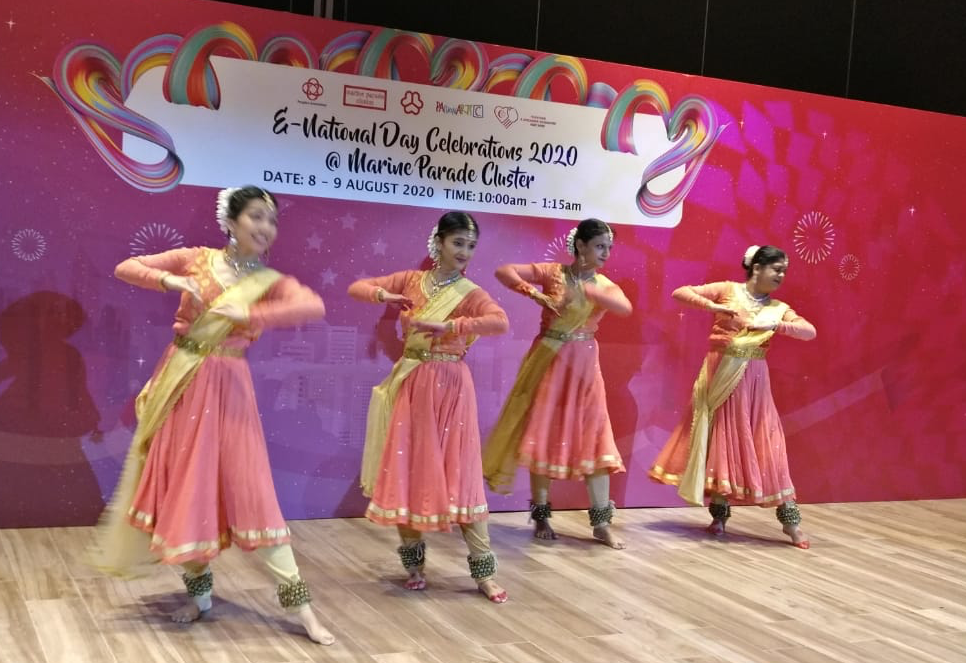
On August 7th Artistic Director, Aravinth Kumarasamy participated in a panel discussion by Aalaap Concepts named “Dance in the Now : Episode 3 Context of Curation.” The discussion centred on the idea of curation and the way online medium and technology affects curation of festival and events and the guiding principles of curation during the pandemic and beyond. Four Dance Curators across the globe, namely, Amrita Lahiri, Aravinth Kumarasamy, Manjot Chawla, Sahasra Sambamoorthi all shared insightful views on some of the current trends they have observed online and how digital curation is likely to be key for most venues in the coming year. Watch their conversation here ; Click here On August 8th, Apsaras Arts was featured on Television (in Tamil & English) as recipient of the inaugural Stewards of Intangible Cultural Heritage Award. This award was conferred by National Heritage Board, Singapore in June 2020. Watch the telecast here : Click here On August 8th and 9th, in celebration of Singapore’s 55th National Day Apsaras Arts team celebrated by participating in Marine Parade Cluster’s e-NDP programs, showcasing the diversity of the cultures at Singapore. Apsaras Arts Dance company and academy students performed Bhartanatyam, Kathak and Odissi pure dance sequences in this widely watched community event premiered over the National Day weekend on marine Parade Cluster’s Face book page. Click here Apsaras Arts also celebrated through a dance video featuring multicultural dancers who unite through the language of classical dance movements and wishes Singapore a Happy National Day. Watch this video : Click here On August 11th, on the auspicious occasion of Lord Krishna’s birth anniversary, Apsaras Arts Academy released a series of digital performance videos featuring students in celebration of “Krishna Janmashtami. This thematic event witnesses the dance performances in three forms- Kathak, Bharatnatyama and Odissi. Watch the concert here : Click here